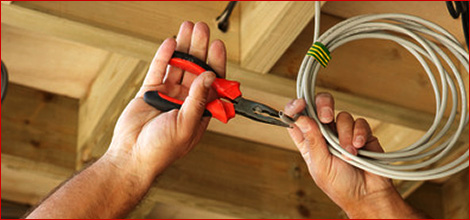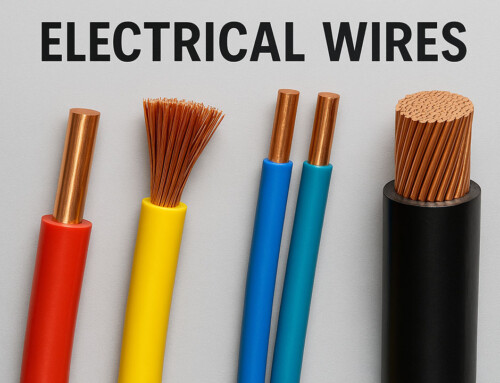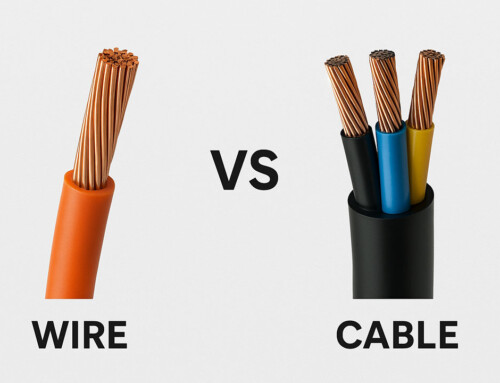Table of Contents
A special attention is required while doing electrical wiring of home or workplace as it directly relates to safety of a person or equipment. If you want to achieve flexibility of loading different electrical appliances in your home, implement the following electrical wiring practices. The electrical conduits practices recommended here meet NEC guidelines guaranteeing proper load growth for both commercial and residential buildings.
Circuit conductors
If you expect the load on your house, office, establishments, or other buildings to increase in future, consider using at least 12 AWG conductors. Ensure that they have protection of 20-amp circuit breakers and are designed with a 15-amp load standard each.
In addition, consider implementing these measures on wires and cables to increase the optimal performance of your circuit conductors.
- Install large conductors- supersized phase conductors to help in minimizing the level of heating when powering non-linear loads. In addition, this improves conducting efficiency.
- Install bigger neutral conductors- if you expect to increase the nonlinear loads in the future, invest in large neutral conductors.
- Install and separate neutral conductors- let the neutral conductors for 120 volts and 227 volts be separate.
Number of receptacles
To allow the normal length of lamp cords and other wire cables, the NEC Code recommends more than six feet of distance between the point on a wall and an appliance receptacle. In applications such as kitchen countertops, electricians should wire receptacle outlets some twelve feet or four feet apart.
The biggest challenge here is the difficulty in predicting how items such as furniture in your house will be arranged. Additionally, there may be an inadequate number of outlets at various locations. Evidence for this can be seen in the outlet power strips that today’s equipment use.
In locations where you can expect a huge load, such as computer workstations, offices, and home entertainment, the use of Quadruplex receptacles is an ideal solution. Reducing the number of receptacles that a single circuit uses will limit the installation and use of sensitive equipment. It also positively affects circuit conductors, voltage drop, chance of interaction, and reduces the likelihood of harmonics accumulating to harmful levels.
Number of circuits
If your home has a large kitchen and multiple bathrooms, you need additional circuits that go beyond the minimums of the NEC Code. This effectively maintains the high-capacity appliances that characterize these rooms.
In addition, limit the number of use receptacles per circuit. For example, a 15-amp circuit can run 1800 Volt Amps when working at 100 per cent rate. While NEC recommends using circuits at 80 per cent rate, this translates to 1440 Volt Amps.
- In commercial buildings-, protect sensitive electronic appliances by limiting the receptacles in each circuit. In addition, this increases the capacity of each receptacle in anticipated load growth.
- In residential buildings-, the Code restricts the number of receptacles on each circuit. However, depending on the location in the building, install limited duplex receptacles on branch circuits that serve a general purpose.
Individual branch circuits
For some reasons, NEC requires a high number of circuits for use in most commercial and residential buildings. The Code recommends that sensitive electrical appliances, high-capacity loads, and equipment that cause poor quality of power obtain power from individual circuits. This separation eliminates the interference with equipment on a common circuit.
Where individual branch circuits are installed, the harmonicas generated in other circuits are shielded from coming in contact with sensitive equipment. In addition, this prevents the high neutral currents from sensitive electronic appliances to those circuits, effectively eliminating the likelihood of incorrect operation and voltage drop.
Raceways
Raceways provide the ease of upgrading conductors efficiently and give electricians the freedom to pull conductors through a building. Therefore, let spare raceways and safety electrical material is installed during construction to allow an easy installation of conductors in the future.
Lighting and Switching
As appliances and equipment advance over time, the lighting and switching mechanisms in your house or building should anticipate future modifications. For example, motion detectors and other electronic lighting devices require a small standby current to remain in their optimal state.
Therefore, install the following solutions for safety switches and lighting appliances right from building construction.
- Several switching levels – let lamps, switch luminaries and ballasts give varying levels of lighting.
- Allow the switching at both ends of spaces, such as stairways, halls, multiple-door garages and other large rooms. Let plug-in lamps and ceiling fans have separate safety switches.
- Outdoor lighting- let holiday lighting, receptacles in eaves, receptacles on home sides, decks, patios and other places where people assemble have ample lighting.
These applications are necessary if you want to reduce the load on the circuits in your house. If you have not implemented them yet, call a reputable electrician today to overhaul the electrical conduits. While this protects the electrical wiring from possible hazards, it also safeguards the assets in your house or building.






